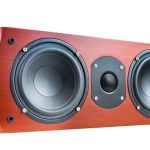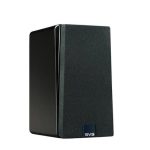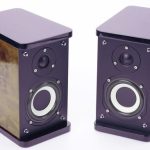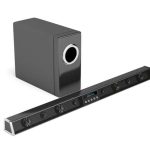In-wall and ceiling speakers do an amazing job with the mid and high frequencies. They enhance the quality of sound coming from your home theater by taking these frequencies and leaving the bigger sound drivers to deal with the lows. In addition to sound quality improvement, in-wall and ceiling speakers can add great aesthetic value to your décor. But for you to enjoy the full benefits of these speakers, you have to make sure that they are positioned properly. In this article, we will focus on various aspects pertinent to the placement of in-wall and ceiling speakers.
Let’s start by answering the question: why is proper placement of in-wall and ceiling speakers important?
Importance of Proper Speaker placement
Proper placement of in-wall and ceiling speakers is critical to maintaining a good stereo effect. Remember that mids and highs delivered by these speakers follow a certain direction. They are unlike bass signals that are non-directional (thus a subwoofer can be placed anywhere in the room).
When you are thinking about installing speakers, you have to consider the effects of reflected sound on the overall audio. Speaker positioning affects the musical image and timbre. Thus, you want to make sure that in-wall and ceiling speakers are placed thoughtfully so that they portray the musical image accurately.
As we will get to see shortly below, it is important to consider the room’s dimensions and make sure there are no voids, undesired reflections, or other shortcomings that affect the home theater experience. This is the ideal situation, but anyone experienced in installing in-wall and ceiling speakers knows that it is not always possible to achieve the ideal sound. Sometimes, compromises have to be made when determining the placement of these speakers. For example, you might find that the ideal location for a speaker is constrained by ceiling height, HVAC ducts, stud locations and so on. Such challenges are inevitable, but there’s always a way to work around them to ensure that the best possible sound is achieved.
What determines the placement of in-wall and ceiling speakers?
You, like many home theater sound lovers and installers, have probably been asking yourself questions like: How many in-wall speakers should I install in a room of certain size? How far apart should I place in-wall or ceiling speakers? At what angle should I tilt my in-wall speakers to deliver sound the best way? We are going to get in-depth answers to these questions so that veterans as well as newbies can find it easier to make the decisions concerning the placement of in-wall and ceiling speakers.
It is likely that you’ve come across some general rules that guide the placement of speakers in a home setting, for example the “golden triangle” rule and the “toe-in” rule. Do these rules apply to in-wall and ceiling speakers, or does an understanding of the rules help in the installation of the speakers?
According to the “golden triangle” rule, speakers should be placed at equal distances away from the listening area. Equidistant speaker positioning helps to create a cohesive soundstage. This is a kind of general rule, and it is not always suitable to all room acoustics, speaker dispersion patterns, and users’ preferences. Nevertheless, the rule is still a good starting point especially when placing in-wall and ceiling speakers in a small, simply designed space.
Toeing (from the toe-in rule) involves placing speakers with directional tweeters in a way that tonal and spatial balance is obtained. The speakers may be aimed straight ahead to create a more spacious soundstage. They may also be aimed a few feet in front of the listening position, which reduces the amount of treble that reaches the listener’s ears.
In-Ceiling Speaker Placement
In-ceiling speakers disperse sound in a circular pattern. Think of the speakers as having a circular sound field below it. When installing multiple in-ceiling speakers, place them at proper distances apart so that the sound fields overlap. This way, sound volume differences and dead spots are avoided. When a person moves throughout the space, they should not identify a sound gap.
It is also noteworthy that placing in-ceiling speakers too close together results in improper sound imaging, and it is an obvious waste of money. Installation manuals usually contain speaker placement information. If you encounter any challenge understanding the information, it’s wise to consult an installation professional.
How to place surround (in-wall and ceiling) speakers for stereo listening
Do you spend significant amount of time listening to music in a room? Investing your time into planning how to place your speakers can give you really handsome dividends in terms of listening experience.
Here’s how you can obtain a good stereo effect:
Place left and right in-wall speakers at equal distance from the prime listening seat and at the ear level of a seated listener. For an illustrative example, consider the case where you want to install speakers in a wall that is 10 feet from the prime listening chair. Place the speakers at least 5 feet and at most 10 feet from each other.
For ceiling speakers, follow the same equal distance approach. Additionally, aim their tweeters toward the listening seat. A point to note here is that while doing your measurements, distances are measured horizontally. Do not measure the distance from your seat upwards to the ceiling speaker. Instead, locate a spot on a horizontal line that passes through the listening position to represent the location of the ceiling speaker. Measure the distance from that spot to the listening seat.
In-wall and ceiling speaker placement according to room size
Factoring in room size dimensions when placing in-wall and ceiling speakers ensures that the sound will be uniformly dispersed to all parts of the room. It helps to avoid having softer music in some areas and too loud music in other areas, especially when the volume is low. With three or four speakers, you can create a sound field with great stereo effect no matter where you stand or sit in the room. Also, with less than three speakers you can take advantage of reflected sound to build a relatively even sound stage.
Below are a few critical guidelines for placing in-wall and ceiling speakers. These guidelines apply to a wide range of users’ goals, needs, room sizes, etc. Some of them will be suitable to your situation and others might not suit you.
- Place speakers at least 2 feet away from surfaces that might reflect or interfere with the sound, including corners and bulky or tall furniture.
- Rectangular rooms smaller than 300sq.ft can use two speakers, placed near opposite corners. Diagonal placement usually gives good coverage in terms of sound dispersion.
- For rectangular rooms larger than 300sq.ft, or L-shaped rooms, use at least 3 speakers. A common idea is to stagger them across the room for even sound dispersion.
- If your space can be best described as a long, narrow room, placing in-wall and ceiling speakers at both ends of the room will work well.
- This last guideline applies for any space. If for cost reasons you are limited to using only two speakers, the best options are placing them near opposite corners, centered at far ends of the room, or dispersed for the best possible sound dispersion. Stereo-input speakers are always great for rooms with tricky size and shape dimensions.
Speaker Placement for Dining Room
Hopefully, you are gaining an understanding that how you place in-wall and ceiling speakers has a lot to do with how you want the sound to reach listeners.
Undeniably, dining time is precious time for many families. The kind of sound preferred for the dining area is one that doesn’t distract the typical conversations people have around the table. To this effect, in-wall speakers should sit low on the wall near opposite corners. This placement creates multiple sound reflections and a pervasive sound field, delivering an incredible listening experience during dining.
Ceiling speakers should be installed such that the sound waves they emit do not get reflected in a disruptive manner. Avoid placing ceiling speakers directly above the dining room table as sound reflections will interfere with conversations.
If you want to use only one type of speakers for the dining room (that is, either in-wall only or ceiling speakers only) it is advisable to go with in-wall speakers. You can install these speakers high up or down low on walls so that the sound they give is less attention seeking and thus less distracting.
In-wall and ceiling Speaker Placement in other areas
Kitchen: If you want to follow the news or catch your favorite radio programs while in the kitchen, you can place in-wall and ceiling speakers in there.
In-wall speakers should go high about 6 feet off the floor. This height is great for the majority of people since doing chores in the kitchen involves more standing than sitting.
For ceiling speakers, follow the guidelines above on room shape and size, and remember to avoid placing them directly above raised surfaces such as kitchen countertops or tables.
Bathroom: Ceiling speakers are more common in bathrooms than in-wall speakers. Stereo single ceiling speakers, particularly, find favor among many users because the speakers can play both channels of stereo music. One stereo ceiling speaker will suffice for a small to moderately sized bathroom. However, if yours is rather big or has an unusual layout, you can consider using two stereo-input speakers. For instance, you can place one above the bathtub and the other one above the sink.
Less trafficked areas such as entryways, hallways, laundry rooms, etc. – It is easy to overlook the necessity of placing in-wall and ceiling speakers in areas that don’t constitute the main listening areas of the house. However, installing speakers in less trafficked areas will ensure that you enjoy your music from anywhere in the house without having to crank up the music in the living room. Stereo single speakers are a great option for both in-wall and ceiling speakers in such spaces. If you have to use more than one speaker, stagger them throughout the space for the optimum sound dispersal.
As we near the conclusion, here is a summary several vital considerations to make when choosing and placing ceiling speakers.
- Steam and humidity resistant speakers are excellent performers for the bathroom and the kitchen. You would also enjoy peace of mind knowing that your bathroom ceiling speakers are waterproof.
- Have fire hoods ready when placing ceiling speakers. A fire hood will engulf the back of a ceiling speaker and serves to prevent the spreading of fire within the ceiling. In fact, fire hoods are a safety requirement when installing ceiling speakers, especially in the kitchen. The hood also prevents upward sound leakage and thus enhances the sound delivered to the listening space.
- Amount of depth in the wall or ceiling void: Consider slim and ultra-slim in-wall and ceiling speakers if the amount of depth is a concern.
- Sound absorbent material: Installing a sound absorbent material carefully behind the speaker before mounting in the wall or ceiling is a good idea for better quality sound.
- Power source considerations: In-wall and ceiling speakers are usually passive speakers. They do not have in-built amps, but receive power from an external amp through a speaker cable. Consider this when planning on how to place your speakers.
- You can voice control your speakers: Many in-wall and ceiling speakers come with the ability to be controlled with the help of Google Home or Amazon Echo devices.
A home theater cannot perform to its highest potential if in-wall and ceiling speakers are not placed properly. Whether you are a homeowner or installation expert, installing in-wall and ceiling speakers is easier when you have a deeper understanding of critical aspects of speaker placement. Equipped with this knowledge, you are now better able to plan for the installation of these speaker types in any space in a typical home.
We hope that you have gotten answers to your questions on in-wall and ceiling speakers. If you feel there is still more you want to know about these speakers, drop a comment or question in the comment section below and we’ll be glad to elucidate any issue.
Michael Evanchuk is a San Francisco-based sound engineer with 20 years’ experience installing, troubleshooting, and repairing commercial, automotive, and household sound equipment. Evanchuk owns an auto stereo center, where he offers highly competitive car audio installation and repair services. He has written dozens of articles on different sound engineering topics, all of which have been published in leading journals, blogs, and websites.





